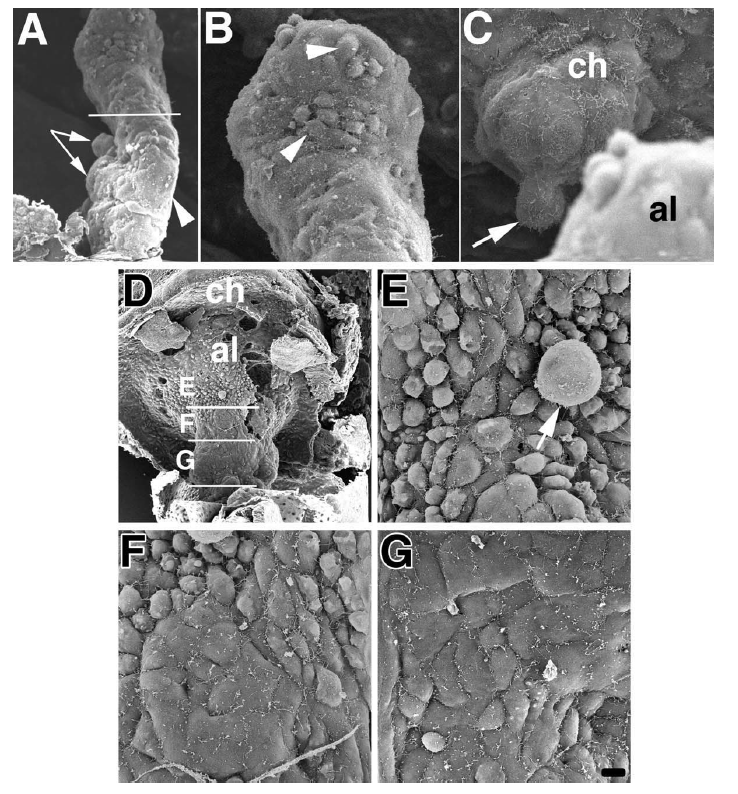Abstract
The rodent allantois is thought to be unique amongst mammals in not having an endodermal component. Here, we have investigated the mesothelium, or outer surface, of murine umbilical precursor tissue, the allantois (∼7.25-8.5 days postcoitum, dpc) to discover whether it exhibits the properties of an epithelium. A combination of morphology, challenge with biotinylated dextran amines (BDAs), and immunohistochemistry revealed that the mesothelium of the mouse allantois exhibits distinct regional properties. By headfold stages (∼7.75-8.0 dpc), distal mesothelium was generally squamous in shape, and highly permeable to BDA challenge, whereas ventral proximal mesothelium, referred to as “ventral cuboidal mesothelium” (VCM) for the characteristic cuboidal shape of its cells, was relatively impermeable. Although “dorsal cuboidal mesothelium” (DCM) resembled the VCM in cell shape, its permeability to BDA was intermediate between the other two regions. Results of immunostaining for Zonula Occludens-1 (ZO-1) and Epithelial-cadherin (E-cadherin), together with transmission electron microscopy (TEM), suggested that impermeability in the VCM may be due to greater cellular contact area between cells and close packing rather than to maturity of tight junctions, the latter of which, by comparison with the visceral yolk sac, appeared to be rare or absent from the allantoic surface. Both VCM and DCM exhibited an ultrastructure more favorable for protein synthesis than did the distal squamous mesothelium; however, at most stages, VCM exhibited robust afadin (AF-6), whereas the DCM uniquely contained alpha-4-integrin. These observations demonstrate that the allantoic mesothelium is not a conventional epithelium but possesses regional ultrastructural, functional and molecular differences that may play important roles in the correct deployment of the umbilical cord and its associated vascular, hematopoietic, and other cell types.
